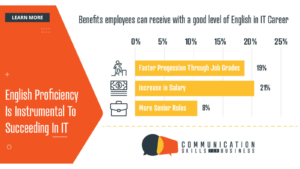Teaching Conversational English in Japan: Is AI the Solution?
If you had ever visited Japan before the age of Google Maps (and before or after the period of mandatory 2-meter social distancing) and asked for directions, you might recall an answer of only a handful of English words accompanied by lots of hand signs. As happy as you were to have found your APA hotel at the time, you might have wondered why English was not more prevalent in Japan. Isn’t it taught in school? Well, my astute friend, it is, but not in a way that would have helped your geo-spatial shortcomings.
Good Reading, Speaking — Not So Much
English language learning is mandatory in Japan from grade 3 all the way to high school. However, as noted by many commentators “The focus of these activities is comprehension, mostly reading, with some listening. Little importance is given to teaching conversational English in Japan.”
Source: Write Teach Japan
How bad is it?
On July 31st, 2023, the Ministry of Education, Culture, Sports, Science, and Technology (MEXT) released the results of this year’s English achievement test, administered to grade 9 students. The results? A mere 12% average correct answer rate on the “speaking” section. 60% of the students scored a total of zero for the entire “speaking” section. Even more shocking, when students were asked to express their own opinion and reasoning, the average correct answer rate was 4%. Speaking results were about 4 times lower than the “listening, reading, writing” sections of the test, which had an average correct answer rate of 46%.
Source: Asahi Shimbun (July 2023)
To put it plainly: Japanese people can read English, not speak it.
That is also one of the reasons why it is generally difficult for foreigners to navigate the job market in Japan. Despite some excellent job boards like the one from our friends at “Jobs in Japan”, many foreign workers who do not speak Japanese well get stuck in temporary positions.
Source: Nikkei (June 2022)
A Testing Issue
With over 2 million tests conducted every year, Japan has one of the highest number of TOEIC test takers worldwide. However, only 1.7% of all tests taken evaluate “Speaking & Writing” vs. 98.3% that evaluate “Listening & Reading”.
Source: IIBC (May 2022)

The “Wash Back” Effect: Teaching to the Test
Since most tests taken in Japan focus on listening and reading, schools naturally adjust their programs to focus on these skills.
“As more and more companies and universities require high TOEIC score for admittance into their various programs, English classes themselves readjust in order to provide students with the skills to be effective test-takers, not communicators.”
Source: Guidable (July 2019)
Teaching conversational English in Japan takes a back seat.
Eventually, this leads learners to spend less time on learning how to speak English.
Why no speaking tests? It’s a cost issue.
The budget of The Tokyo Metropolitan Board of Education for its 2023 English speaking test for junior high school students is reported to be 3.5 billion yen ($25M). This amounts to about 17,000 yen ($115) per student to simply test their ability to speak English.
Source: Tokyo NP (July 2023)
Because of that high cost, most schools cannot afford to regularly evaluate students’ English speaking skills, or even ensure that their curriculum supports its improvement.
Arguably, we could ask parents to bear the testing cost but should we really be asking them to foot the bill? Let’s try to find a better solution!
How can we solve the problem? Cheaper speaking tests with AI.
If we reduce the cost of speaking tests while increasing their frequency, we may be able to harness the power of the aforementioned “wash back” effect. Courses will gradually start to align with the speaking tests and students will practice their English speaking skills more to get higher test scores.
The current reason why assessing English speaking is so expensive is that humans record and grade most tests (2, sometimes 3 graders). The process is long and involves costly human input.
The good news is that, thanks to the recent advances in AI technology, we can make that process much faster and cheaper. AI technology is already capable of handling most steps: voice recognition, speech to text transcription, English language evaluation on both voice and text. It can even evaluate how relevant a candidate’s answer is to a test question, thanks to Large Language Models such as the one behind ChatGPT.
Using these AI models, a few solutions have recently been launched to support English speaking education. Our colleagues at Potential Plus have automated the process of evaluating speaking tests with their platform, AISATS (AI Skill Assessment and Training System).
Try for free
Companies or organizations can now create and administer their own original English speaking tests. AI automatically evaluates candidates or students on: pronunciation, fluency, grammar, vocabulary, as well as task achievement (describing a picture/text, providing an opinion and reasoning, explaining historical or scientific facts, etc.).
Conclusion
There is a good chance that AI-driven tests will become more and more common within organizations. This should bring about a greater emphasis on English speaking skills, thanks to the “wash back” effect. Additionally, if such testing solutions are successful, students will be able to get instant and fair evaluation without the fear of a human grader “judging” them; teachers will be able to focus their time on guiding them and the government and organizations will be able to save resources in test fees and overhead administration costs.
In the past, AI models were not able to evaluate language skills as human graders. Now, it has become difficult to say which is more accurate. Some AI technology like that behind deepfakes has rightly generated negative media coverage. However, and despite its other drawbacks (bias in training data, software limitations, hardware requirements), we can leverage AI positively for education with test evaluation.
It is up to us how we will restrict the use of AI in the future, but in terms of English speaking assessment, I say let the machines take over the world.
Are you looking for a job teaching English in Japan? Visit: Jobs in Japan







One Response
Arkady Zilberman
We have so much data on why Japanese can read but cannot speak! But we still need proposals on how we can solve the problem. Cheaper speaking tests with AI? It is a wrong suggestion for two reasons: • While testing can be a valuable tool for measuring progress and identifying areas for improvement, solely focusing on testing in English language learning is always counterproductive and hinders progress since it asks students to memorize rules without understanding their practical application or developing their overall English skills. Progos entered the scene in 2020 as a novel AI-based English-speaking test platform developed by RareJob. It quickly gained traction due to its convenient, affordable, and fast assessment process. However, it has never been used massively. There is NO chance that AI-driven tests will become more and more common within organizations. Is East Asia turning away from English? Adult English proficiency has been waning in East Asia for the past four years and Japan for an entire decade. Are you tired of the status quo in English language learning? These two thought-provoking articles (https://bit.ly/3R7HxkM and https://bit.ly/3R7HxkM) delve into the underlying causes of low English proficiency in Japan and propose innovative solutions for shaking things up. We've received over 630 views on these articles but haven't heard a peep from our fellow English teachers in Japan. Could something be holding back the discussion? Is a cultural barrier preventing us from openly discussing challenges and weaknesses with outsiders? Let's break the silence! Let's use this opportunity to connect, share experiences, and brainstorm solutions. Leave a comment below, and let's get the discussion started!
12/12/2023